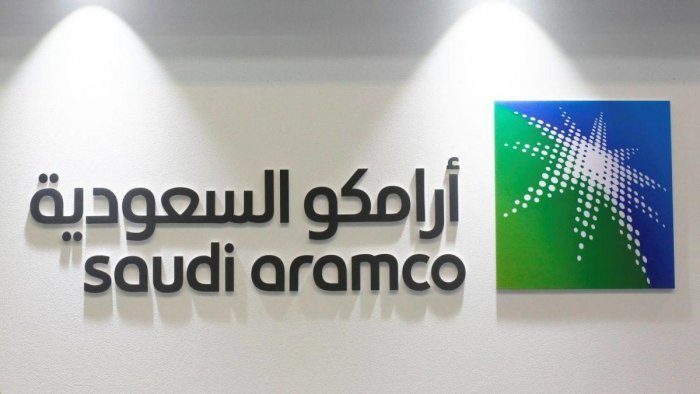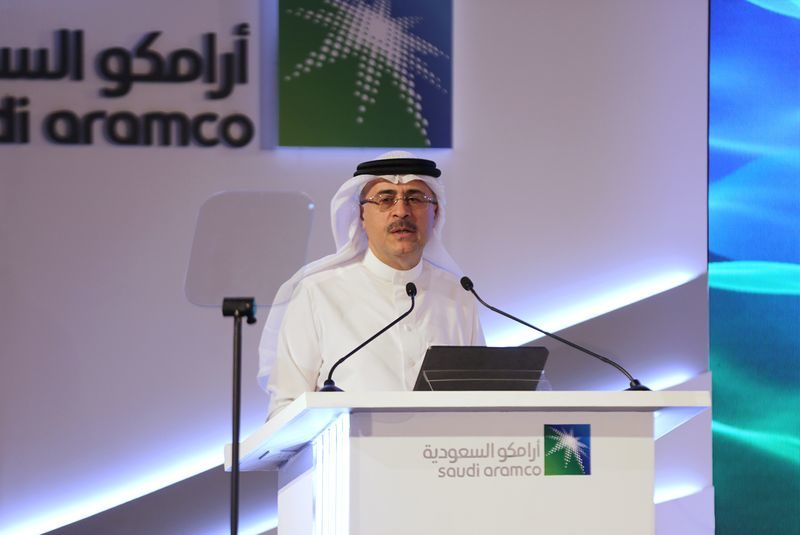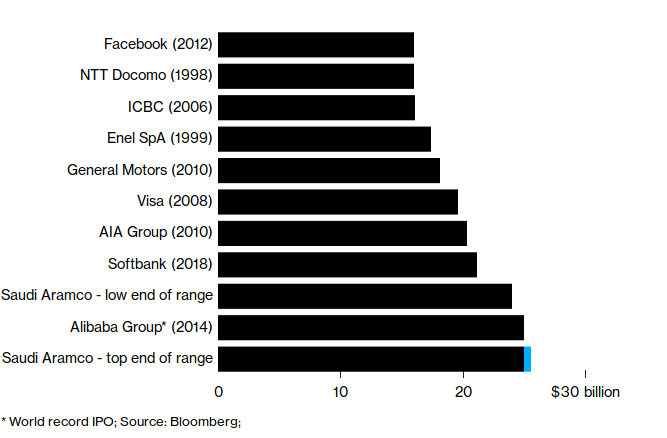The initial public offering will now rely on local investors after most international money managers balked at even the reduced price target. The deal won't be marketed in the U.S., Canada or Japan and on Monday bankers told investors roadshow events in London and other European cities, planned for this week, were canceled.
Aramco will sell just 1.5% of its shares on the local stock exchange, about half the amount that had been considered, and seek a valuation of between $1.6 trillion and $1.71 trillion. As well as slimming down the deal, the Saudi authorities relaxed lending limits to ensure sufficient local demand to get the share sale done.
While the new valuation means Aramco will overtake Apple Inc. as the world's biggest public company by some distance, the plans are a long way from Prince Mohammed's initial aims: a local and international listing to raise as much as $100 billion for the kingdom's sovereign wealth fund.
At the lower end of the price range, the offer would fall short of a record, coming in just below the $25 billion raised by Alibaba Group Holding Ltd. in 2014.
Aramco Chief Executive Officer Amin Nasser kicked off the IPO's final phase at a presentation for hundreds of local fund managers in Riyadh on Sunday.
This is "a historic day for Saudi Aramco," Nasser said. "We are excited about the transition to being a listed company."
With the offer price putting Aramco's maximum valuation at about $1.7 trillion, there should be room for investors to make some money, said one local investor, who like all the people attending asked not to be identified.
Aramco will need to lean heavily on local investors, large and small, to get the job done. The Saudi Arabian Monetary Authority will allow smaller retail investors to borrow twice their cash investment, double the normal leverage limits the regulator allows for IPOs, according to people familiar with matter.
The kingdom's richest families, some of whom had members detained in Riyadh's Ritz-Carlton hotel during a so-called corruption crackdown in 2017, are expected to make significant contributions to the IPO.
Cornerstone Investors
The final version of the prospectus didn't identify any cornerstone investors, though the company is still in talks with Middle Eastern, Chinese and Russian funds.
Foreign investors had always been skeptical of the $2 trillion target and recently suggested they would be interested at a valuation below $1.5 trillion. That would offer a return on their investment close to other leading oil and gas companies like Exxon Mobil Corp. and Royal Dutch Shell Plc.
The new valuation implies Aramco, which has promised a dividend of at least $75 billion next year, will reward investors with a yield of between 4.4% and 4.7%. That compares with just under 5% for Exxon Mobil and 6.4% for Shell.
"Institutional investors are unlikely to find this valuation range attractive," analysts at Sanford C. Bernstein said in a research note Sunday, adding that the price range implies a premium to Western oil majors on most metrics, including price-to-earnings and free cash flow yield. "Cornerstone investors, sovereign wealth funds and local investors could still provide enough support to support the IPO given some of the strategic interests."
Saudi Arabia has been pulling out all the stops to ensure the IPO is a success to a skeptical audience. It cut the tax rate for Aramco three times, promised the world's largest dividend and offered bonus shares for retail investors who keep hold of the stock.
"Aramco's price range takes into account some uncertainties that weren't fully absorbed when the IPO was first floated," such as governance, said Jaafar Altaie, managing director of Abu Dhabi-based consultant Manaar Group. "The lower range reflects uncertainties. It takes into account issues of supply that are very fluid, and demand that doesn't look so good now."
World's Biggest IPO?Aramco has also faced the challenge of the strengthening global movement against climate change that's targeted the world's largest oil and gas companies. Many foreign investors are concerned the shift away from the internal combustion engine -- a technology that drove a century of steadily rising fossil fuel demand -- means consumption of oil will peak in the next two decades.
At the top end of range, Aramco's IPO would be bigger than Alibaba's
Speaking in Riyadh on Sunday, Nasser acknowledged the prospect of peak demand, but argued that with the lowest production costs in the industry, Aramco would be able to win market share from less-efficient producers.
The IPO is a pillar of Prince Mohammed's much-hyped Vision 2030 plan to change the social and economic fabric of the kingdom and attract foreign investment. The prince, who rules Saudi Arabia day-to-day, is trying to recover his reformist credentials after his global reputation was damaged by the 2018 assassination of government critic Jamal Khashoggi in the kingdom's Istanbul consulate.
Proceeds from the IPO will be transferred to the Public Investment Fund, which has been making a number of bold investments, plowing $45 billion into SoftBank Corp.'s Vision Fund, taking a $3.5 billion stake in Uber Technologies Inc. and planning a $500 billion futuristic city.
No matter what the final valuation, the share sale will create a public company of unmatched profitability. Aramco earned a net income of $111 billion in 2018 on revenue of $315 billion.







Comment: See also: